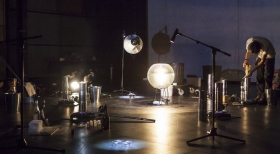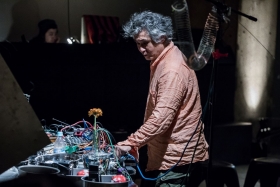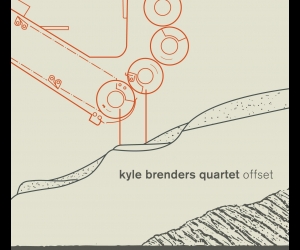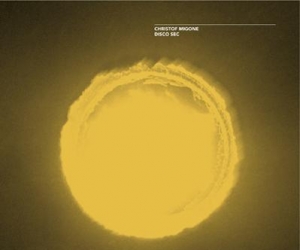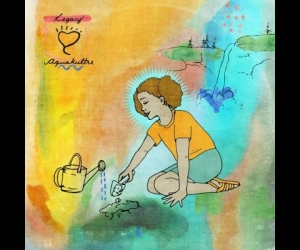“Art should be understood, and enjoyed, as a world that hasn’t been infected by commercialism. And within that, it should serve as a reminder that we are creatures who have the ability to access our souls.”
—Helmut Lachenmann
The Vancouver Push Festival’s fifteenth season featured three inspiring performances of sound art from Japan, over a weekend cocurated by the Japan Foundation and attended by gratifyingly large audiences. Tatsuya Umeda, Asuna, and Marginal Consort presented very different performances, which challenged traditional senses of musicality. All three explored how sound is made and presented in space. From explorations of mechanics, chemistry, and materials in Tatsuya Umeda’s piece Ringo to Asuna’s long-form drones in 100 Keyboards [above photo], audiences were transported to unique spaces, and experienced new and interesting takes on how sound and performance come together.
Starting off the weekend at Performance Works on Granville Island, sound and installation artist Tatsuya Umeda contributed a playful interactive presentation for an engaging forty-five-minute performance of Ringo [left photo]. Umeda used joyful energy to challenge preconceived notions of how sound is created. Using a blend of unconventional raw materials, including sheets of metal and metal beams, which were activated with combinations of heat and dry ice, he created an interactive sound collage. The performer played a very small part in the resulting piece, whose familiar noises layered and interacted in a naturalistic fashion yet were rendered alien by the artistic context.
In East Vancouver’s Russian Hall, ambient artist Asuna’s ninety-minute performance was staged with 100 battery-powered keyboards that created a lush and immersive drone made even more engaging through the innovative layout of his setup and interaction with the keyboards. The most surprising element was his use of popsicle sticks to push down notes on each keyboard. Throughout the performance Asuna moved slowly and methodically around the space, making subtle changes to the tones of each keyboard by changing the keys that would be held down. The audience was allowed to move around the space at will, enhancing the fluid sense of the piece, since different sections of the room exposed subtle differences in the soundscape. The performance maintained a sense of progression and intrigue, creating a sonic wash of colour that was deeply immersive and pleasing.
The series ended in fine fashion Sunday afternoon at Performance Works with an intense three-hour improvisational performance from Marginal Consort [right photo] the four-man group presented a dynamic soundscape that created a wide array of sonic colour, which consistently held my interest. The performers used a massive array of instruments and other sound makers, both acoustic and electronic, many of them handmade. The noises, although dense, were distinct enough that I never felt overwhelmed. The performance communicated a careful yet joyful level of play and intrigue that never lost steam. Again, the audience was free to walk around and observe and feel the performance from different perspectives. This maintained a constant sense of experimentation and uncertainty throughout for both audience and performers, yet the artists demonstrated a profound level of focus that was beautiful to witness.
Overall, the weekend presented an engaging and challenging series emphasizing the importance of experimentation, play, and raw skill. Perhaps the most important takeaway for me was the fruitful breaking down of the usual divide between audience and performer(s). This series counteracted that dichotomy by allowing free movement throughout the spaces, inviting the audience to feel part of the experience of sound art. The Push Festival succeeded in presenting an event that deconstructed the nature of sound and performance in new and wonderful ways.
100 Keyboards photo by Minoru Sato. Ringo photo by Alex Davies. Marginal Consort photo by Kazuyuki Funaki.

